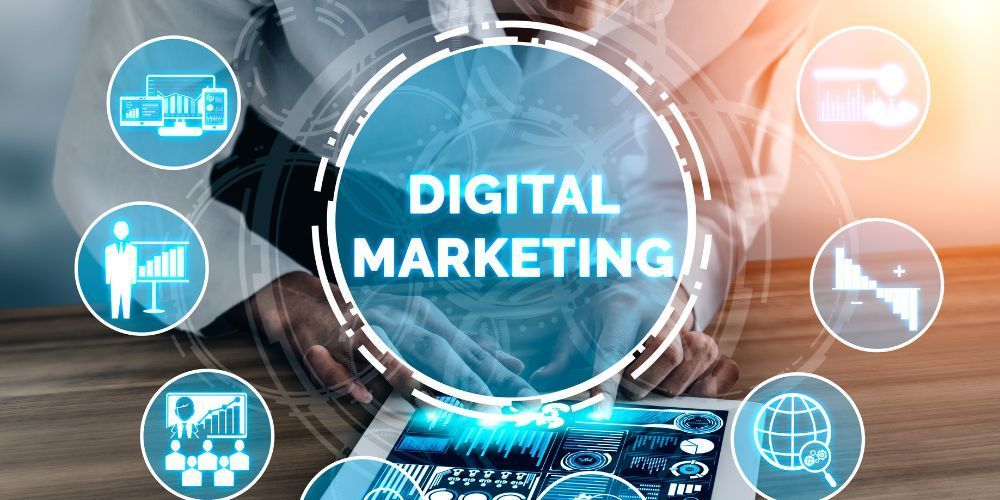MarTech FAQ: Everything You Need to Know About Marketing Technology
Marketing technology (MarTech) is revolutionizing how businesses attract, engage, and retain customers. With the right tools, companies can automate campaigns, personalize customer interactions, and analyze performance with greater precision. However, navigating the ever-evolving MarTech landscape can be overwhelming—whether you’re just getting started or looking to optimize an existing stack.
This comprehensive FAQ answers the most common questions about MarTech, covering essential platforms, AI-driven innovations, data integration best practices, and strategies to enhance efficiency. Learn how to streamline your marketing operations, improve data accuracy, and maximize ROI by leveraging the latest MarTech solutions. Whether you’re a digital marketing professional, a business leader, or a technology strategist, this guide will help you stay ahead in the fast-paced world of marketing automation and analytics.
What is MarTech?
MarTech, short for marketing technology, refers to the suite of software and tools used by businesses to automate, manage, and analyze marketing processes. These tools help marketers improve efficiency, personalize customer experiences, and drive data-driven decisions.
What is the difference between MarTech and AdTech?
MarTech focuses on tools that help manage and execute marketing strategies, including CRM, email automation, analytics, and personalization. AdTech, on the other hand, is specifically designed for digital advertising, covering tools for programmatic ads, retargeting, and media buying.
How does MarTech improve marketing efficiency?
MarTech streamlines marketing operations by automating repetitive tasks, improving data collection, enabling audience segmentation, and facilitating omnichannel marketing campaigns. This helps marketers optimize resources and focus on strategy rather than execution.
What industries benefit most from MarTech?
Virtually every industry can leverage MarTech, but sectors such as e-commerce, B2B, SaaS, healthcare, finance, and retail see the most significant benefits. These industries rely on customer data, personalized marketing, and automated workflows to engage audiences effectively.
What are the top MarTech tools in 2025?
The most popular MarTech tools in 2025 include:
- Customer Relationship Management (CRM): Salesforce, HubSpot
- Marketing Automation: Marketo, ActiveCampaign
- Email Marketing: Mailchimp, Klaviyo
- SEO & Analytics: Ahrefs, Google Analytics
- Personalization & AI: Dynamic Yield, Clearbit
- Social Media Management: Hootsuite, Sprout Social
What should be included in a MarTech stack?
A comprehensive MarTech stack typically includes:
- CRM software to manage customer relationships
- Marketing automation platforms for email and lead nurturing
- Analytics tools to measure campaign performance
- SEO and content marketing software for organic growth
- Social media management platforms for scheduling and engagement
- Personalization and AI tools to enhance customer experiences
How do I choose the right MarTech tools for my business?
To select the right MarTech tools, consider your business goals, budget, and team capabilities. Conduct a needs assessment, research top tools, compare features, and prioritize software that integrates well with your existing technology stack. Data integration across tools is a must to ensure seamless communication, eliminate silos, and enable a unified customer experience.
What are the common mistakes businesses make with MarTech?
- Overcomplicating the stack: Too many tools can lead to inefficiency.
- Lack of integration: Disconnected platforms create data silos.
- Ignoring team adoption: Employees must be trained to use the tools effectively.
- Neglecting data hygiene: Poor data management leads to inaccurate reporting.
How do I integrate multiple MarTech platforms effectively?
Use API integrations or middleware platforms like Zapier to connect tools. However, rather than adding multiple disparate tools, businesses should focus on selecting fewer, well-integrated platforms that seamlessly share data. A bloated MarTech stack with disconnected solutions can lead to inefficiencies and data silos. Ensuring seamless data integration is a must-have requirement, as it allows for accurate insights, consistent messaging, and a unified customer experience across all channels. For example, integrating HubSpot CRM with Marketo allows for better lead tracking and automated marketing workflows, reducing manual interventions.
What’s the best MarTech stack for small businesses?
Small businesses should prioritize cost-effective, easy-to-use tools such as:
- HubSpot CRM (for customer management)
- Mailchimp (for email marketing)
- Google Analytics (for tracking performance)
- Canva (for content creation)
- Hootsuite (for social media management)
How is AI changing MarTech?
AI enhances MarTech by enabling hyper-personalization, predictive analytics, and automation. AI-powered chatbots, recommendation engines, and dynamic content personalization help businesses engage customers more effectively by delivering real-time, data-driven experiences.
Machine learning algorithms optimize campaign targeting, while AI-driven analytics uncover patterns in customer behavior. Additionally, AI streamlines marketing operations by automating content creation, optimizing email sequences, and enhancing customer segmentation. Businesses that leverage AI effectively in their MarTech stack can achieve higher conversion rates, improved customer retention, and a more cohesive omnichannel experience. For example, AI-powered platforms like Persado optimize email subject lines and ad copy, leading to increased engagement and conversions.
What are the biggest MarTech trends for 2025?
- AI-driven marketing automation (e.g., using chatbots like Drift for lead nurturing)
- Customer Data Platforms (CDPs) for unified data management (e.g., Segment consolidates customer interactions across platforms)
- Voice search optimization (e.g., optimizing content for Alexa and Google Assistant queries)
- Privacy-focused marketing strategies (e.g., implementing server-side tracking to comply with GDPR and CCPA)
- Low-code and no-code marketing tools (e.g., Unbounce for landing page creation without coding knowledge)
How can automation improve marketing efficiency?
Marketing automation reduces manual workload by streamlining email marketing, lead nurturing, social media posting, and reporting. This allows teams to focus on strategy and creativity rather than execution. For example, automating abandoned cart emails through Klaviyo can significantly boost e-commerce conversions without manual follow-ups.
What is predictive analytics in MarTech?
Predictive analytics uses historical data and AI to forecast future customer behavior. Businesses use predictive models to anticipate trends, optimize campaigns, and improve customer retention. For instance, platforms like HubSpot and Salesforce use predictive lead scoring to identify high-value prospects for sales teams.
How will MarTech evolve over the next decade?
MarTech will continue evolving toward AI-driven decision-making, real-time personalization, and greater focus on first-party data due to increasing privacy regulations. Businesses will increasingly leverage AI for real-time behavioral insights, ensuring marketing campaigns are tailored at an individual level. With heightened privacy concerns, companies must prioritize ethical data collection strategies and rely more on first-party data sources.
Additionally, the integration of AI with automation will lead to smarter, more dynamic customer journeys, where content, offers, and engagement are optimized in real time based on user behavior. The rise of low-code and no-code solutions will also enable marketers to implement these advanced technologies without extensive technical expertise.
How do I measure the success of my MarTech stack?
Track key performance indicators (KPIs) such as:
- Customer Acquisition Cost (CAC): Calculate by dividing total marketing expenses by the number of new customers acquired.
- Customer Lifetime Value (CLV): Estimate future revenue from a customer by multiplying the average purchase value by the average purchase frequency and retention rate.
- Conversion Rates: Measure the percentage of visitors who complete a desired action, such as signing up or making a purchase.
- Marketing ROI: Compare the revenue generated from marketing campaigns to the total marketing spend.
- Engagement Metrics: Analyze email open rates, social media interactions, and content engagement to assess audience interest.
What’s the ROI of investing in MarTech?
A well-implemented MarTech stack improves efficiency, boosts revenue, and enhances customer experiences. Businesses can expect improved lead conversion rates, reduced operational costs, and better marketing attribution.










